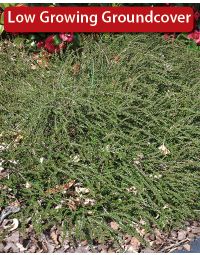A perennial problem for gardeners, weeds! While it is wonderful to spend time in our gardens, it can also turn into a chore, particularly when the weeds get away from us after a trip to the cabin or just too darn much heat to be out pulling weeds!
Ground covers to the rescue! They offer a number of benefits:
- Take the place of those weeds
- Enhance soil health
- Provide food and habitat for pollinators and other beneficial insects
- Reduce soil erosion
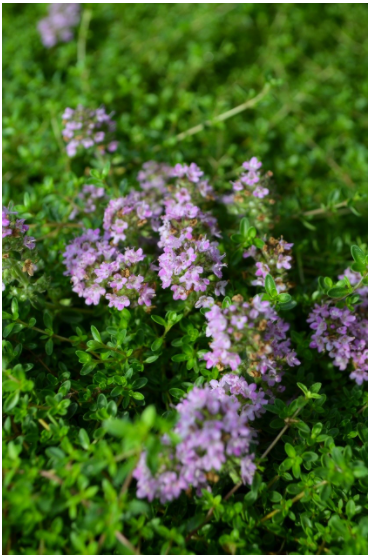
Creeping purple thyme
Plants grown as ground covers can be ornamental or edible, herbaceous or woody, and perennial, biennial or annual plants. The big question to ask yourself before choosing a ground cover is to decide what you want it to do for you.
The Garden Scoop had three reasons:
- Keep weeds down behind the garage where I store stuff – just plain mulch!
- Erosion issues next to my sidewalk – haven’t quite decided on this one yet…
- Easier mowing around a crabapple and protect it from an aggressive mower – Pennsylvania sedge grass
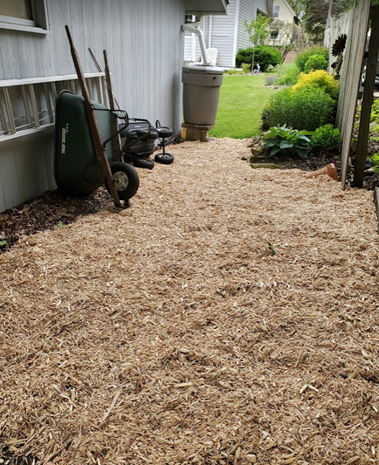
The mulch has to be replenished every few years
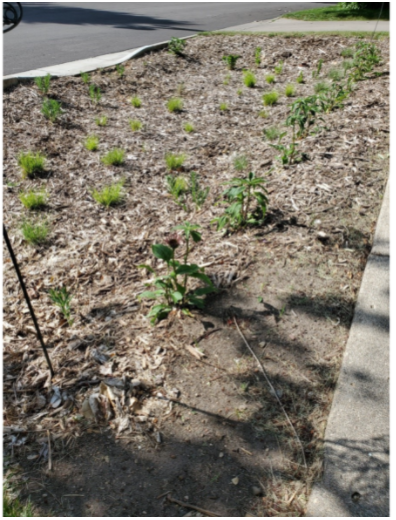
Rain garden planted fall 2020, ground cover would help with erosion at the sidewalk
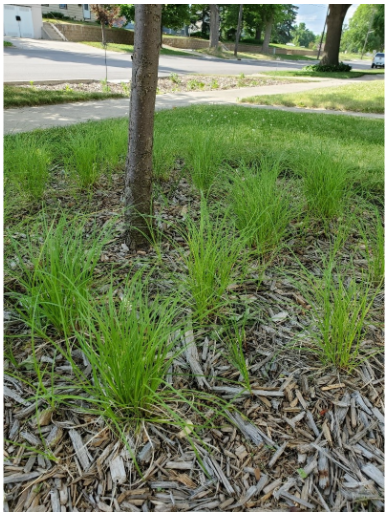
A native sedge grass “mulch” to protect the crabapple
There are a LOT of options, from Tom Thumb cotoneaster (a tiny little creeper) to sedums, thymes, moss, spurge and more. Flowering, non-flowering, and various heights.
While many weekend weed warriors appreciate hand weeding for a couple of weeks, in the heat of summer and when the weeds become overwhelming, it DOES make us all a bit weary.
Here’s to covering your ground,

Link to the video on SOME of our ground covers

